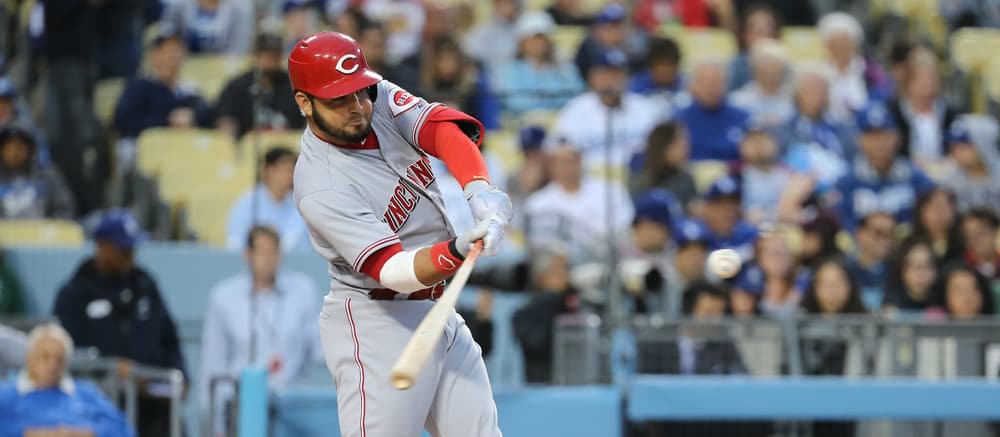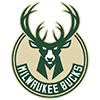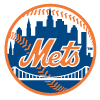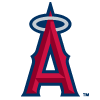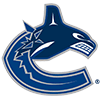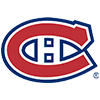It's good to be back. I'll admit that it was becoming difficult to fill this space in recent weeks as negotiations continued to drag on and on, but things are about to get crazy in the fantasy baseball world. Spring training is in many ways the busiest time of the year for fantasy baseball, as owners scramble to draft three more leagues than they'd originally intended to manage, and we're about to have the wildest one in living memory all crammed into just three weeks.
Some of you may have (justifiably) tuned out over the last three-and-a-half months, so I'll use this column this week to catch you up. RotoWire's Roundtable Rankings (which I took part in alongside the excellent trio of Jeff Erickson, Clay Link and Todd Zola) returned Saturday and make for a great place to begin your return to draft prep. For this week's column I'll break down the biggest risers and fallers from our most recent rankings as compared to our final set from before the shutdown, which were made under the assumption that the season would only be delayed by two weeks, as was the official stance of Major League Baseball at that time.
This won't be purely a numeric ranking of which players rose or dropped the most total spots, as a drop from two to three is arguably more relevant than a drop from 60 to 80. I'll go through some of the more relevant movers within the top 100, as there's
It's good to be back. I'll admit that it was becoming difficult to fill this space in recent weeks as negotiations continued to drag on and on, but things are about to get crazy in the fantasy baseball world. Spring training is in many ways the busiest time of the year for fantasy baseball, as owners scramble to draft three more leagues than they'd originally intended to manage, and we're about to have the wildest one in living memory all crammed into just three weeks.
Some of you may have (justifiably) tuned out over the last three-and-a-half months, so I'll use this column this week to catch you up. RotoWire's Roundtable Rankings (which I took part in alongside the excellent trio of Jeff Erickson, Clay Link and Todd Zola) returned Saturday and make for a great place to begin your return to draft prep. For this week's column I'll break down the biggest risers and fallers from our most recent rankings as compared to our final set from before the shutdown, which were made under the assumption that the season would only be delayed by two weeks, as was the official stance of Major League Baseball at that time.
This won't be purely a numeric ranking of which players rose or dropped the most total spots, as a drop from two to three is arguably more relevant than a drop from 60 to 80. I'll go through some of the more relevant movers within the top 100, as there's more than enough to fill this column just within that group. (Depending on the pace of news the next seven days, I may wind up repeating this exercise for picks outside the top 100 next week.) Also, I'll ignore those who moved in the composite rankings but who didn't move in mine, as it's unfair to my fellow rankers to speculate on their reasoning. I'm sure they'd be happy to answer your questions if you ask them in the comment section of the rankings article linked above, however.
RISERS
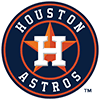 Justin Verlander, SP, Astros (was 33, now 19): Our previous rankings came out just days after Verlander was shut down due to a lat strain. He likely would have ranked even lower if those rankings came out a few days later than that, when news emerged that he'd also elected to undergo groin surgery, a procedure which would keep him out six weeks. The shutdown has given him more than enough time to recover from both ailments, however, and while it hasn't been officially confirmed that he'll be available on Opening Day, he's called himself healthy and pain-free. There's still plenty of risk inherent in a 37-year-old pitcher who's already battled two injuries this year, even if he's supposedly healthy now, so it makes sense that we don't unanimously agree that Verlander belongs in the late first or early second round, but he's someone I'll be quite happy to own.
Justin Verlander, SP, Astros (was 33, now 19): Our previous rankings came out just days after Verlander was shut down due to a lat strain. He likely would have ranked even lower if those rankings came out a few days later than that, when news emerged that he'd also elected to undergo groin surgery, a procedure which would keep him out six weeks. The shutdown has given him more than enough time to recover from both ailments, however, and while it hasn't been officially confirmed that he'll be available on Opening Day, he's called himself healthy and pain-free. There's still plenty of risk inherent in a 37-year-old pitcher who's already battled two injuries this year, even if he's supposedly healthy now, so it makes sense that we don't unanimously agree that Verlander belongs in the late first or early second round, but he's someone I'll be quite happy to own.
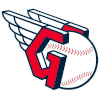 Mike Clevinger, SP, Indians (was 32, now 23): Back when play was first paused, Clevinger's status was somewhat uncertain. He had torn his meniscus in mid-February and was recovering from surgery, a process that was supposed to cost him at least a start or two at the beginning of the season. Even a two-week delay may have been all the time he needed to get back on the mound, but the uncertainty that comes with drafting an injured player was clearly suppressing his stock. Now fully healthy, he's moved up from the early third round to the middle of the second. The debate between him and teammate Shane Bieber will be a very interesting one. The group as a whole has Clevinger ahead by one spot, but it's as narrow of a margin as possible. Clevinger had a slightly higher strikeout rate and a much lower home-run rate last season, but he also walked more batters and got fewer groundballs.
Mike Clevinger, SP, Indians (was 32, now 23): Back when play was first paused, Clevinger's status was somewhat uncertain. He had torn his meniscus in mid-February and was recovering from surgery, a process that was supposed to cost him at least a start or two at the beginning of the season. Even a two-week delay may have been all the time he needed to get back on the mound, but the uncertainty that comes with drafting an injured player was clearly suppressing his stock. Now fully healthy, he's moved up from the early third round to the middle of the second. The debate between him and teammate Shane Bieber will be a very interesting one. The group as a whole has Clevinger ahead by one spot, but it's as narrow of a margin as possible. Clevinger had a slightly higher strikeout rate and a much lower home-run rate last season, but he also walked more batters and got fewer groundballs.
 Eugenio Suarez, 3B, Reds (was 65, now 59): Suarez came with a fair bit of uncertainty prior to the season being delayed, as he was working his way back from shoulder surgery, a procedure he underwent back in January after injuring himself in a pool. It didn't look like he was going to miss all that much time, if any, which potentially explains why he didn't rise all that much between the two editions, as the initial two-week delay may have already been enough for him to make it back without missing any games. In any case, while there's some risk that comes in drafting a player not far removed from surgery, I'm a big fan of Suarez this season, as he's coming off a 49-homer season and plays for a Reds team that improved its lineup significantly with the additions of Nick Castellanos and Mike Moustakas in the offseason.
Eugenio Suarez, 3B, Reds (was 65, now 59): Suarez came with a fair bit of uncertainty prior to the season being delayed, as he was working his way back from shoulder surgery, a procedure he underwent back in January after injuring himself in a pool. It didn't look like he was going to miss all that much time, if any, which potentially explains why he didn't rise all that much between the two editions, as the initial two-week delay may have already been enough for him to make it back without missing any games. In any case, while there's some risk that comes in drafting a player not far removed from surgery, I'm a big fan of Suarez this season, as he's coming off a 49-homer season and plays for a Reds team that improved its lineup significantly with the additions of Nick Castellanos and Mike Moustakas in the offseason.
 Tyler Glasnow, SP, Rays (was 72, now 60): Glasnow checks all the boxes for me for the type of player whose stock should rise in a short season. In a season in which so many strange things are bound to happen, due either to the ongoing pandemic or the randomness that comes with dramatically shrinking the sample of games, every player will have a very low floor. It makes sense to target players like Glasnow, who had very low floors to begin with but at least have high ceilings to go with them. In addition to the risk that comes with Glasnow's very short track record as an elite arm, he also has significant durability concerns, but those should go away in a 60-game season. He also has the type of profile that can provide value in shorter starts, as his strikeout rate is among the best in the league. It's worth noting that the love for Glasnow is apparently not universal, however, as while Todd and I both jumped him by 20 or more spots, Jeff and Clay disagreed and dropped him slightly.
Tyler Glasnow, SP, Rays (was 72, now 60): Glasnow checks all the boxes for me for the type of player whose stock should rise in a short season. In a season in which so many strange things are bound to happen, due either to the ongoing pandemic or the randomness that comes with dramatically shrinking the sample of games, every player will have a very low floor. It makes sense to target players like Glasnow, who had very low floors to begin with but at least have high ceilings to go with them. In addition to the risk that comes with Glasnow's very short track record as an elite arm, he also has significant durability concerns, but those should go away in a 60-game season. He also has the type of profile that can provide value in shorter starts, as his strikeout rate is among the best in the league. It's worth noting that the love for Glasnow is apparently not universal, however, as while Todd and I both jumped him by 20 or more spots, Jeff and Clay disagreed and dropped him slightly.
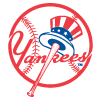 Giancarlo Stanton, OF, Yankees (was 84, now 63): Stanton is another player who took advantage of the additional time to recover from injuries. He dealt with a minor calf strain during spring training and was expected to miss at least a little bit of time, though the two-week delay that the rankings were based on in March already might have been enough time for him to make it back on the field without missing a game. In any case, he's been considered fully healthy for quite some time now. The variance in our rankings seems fair to me, however, as even in a 60-game season, it's hard to be fully confident in a player who was limited to just 18 games last year and who has a long injury history. I'm the highest on him and ranked him in the early third round, as I'm willing to take far more risks than usual in such a short season, but I can understand why some would have him far lower.
Giancarlo Stanton, OF, Yankees (was 84, now 63): Stanton is another player who took advantage of the additional time to recover from injuries. He dealt with a minor calf strain during spring training and was expected to miss at least a little bit of time, though the two-week delay that the rankings were based on in March already might have been enough time for him to make it back on the field without missing a game. In any case, he's been considered fully healthy for quite some time now. The variance in our rankings seems fair to me, however, as even in a 60-game season, it's hard to be fully confident in a player who was limited to just 18 games last year and who has a long injury history. I'm the highest on him and ranked him in the early third round, as I'm willing to take far more risks than usual in such a short season, but I can understand why some would have him far lower.
FALLERS
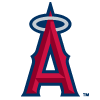 Mike Trout, OF, Angels (was 2, now: 3): Trout's one-spot drop is of course as small as it gets, but it's a relevant change for those lucky enough to draft in one of the top three slots. Prior to the shutdown, I was the lone ranker to have him first overall, but none of us had him any lower than third. This time, I was the only one to keep him in the top three, though even I dropped him to second, while my colleagues ranked him anywhere from fourth to sixth. For me, and presumably for my fellow rankers, this drop is mostly due to the fact that Trout's wife is due to give birth to the couple's first child in August. Ordinarily, that would hardly be noteworthy, but a standard three-game absence for paternity leave during a 60-game season is the equivalent of an 8.1-game absence during a 162-game campaign. How much would you drop a player if you knew he was guaranteed to miss eight games? And that's just the floor, it would seem, since it's still not totally clear what the protocols will be for players returning to their teams after leaving for things such as paternity leave. If Trout and others have to undergo some sort of quarantine upon their return it's possible they miss up to a quarter of the season.
Mike Trout, OF, Angels (was 2, now: 3): Trout's one-spot drop is of course as small as it gets, but it's a relevant change for those lucky enough to draft in one of the top three slots. Prior to the shutdown, I was the lone ranker to have him first overall, but none of us had him any lower than third. This time, I was the only one to keep him in the top three, though even I dropped him to second, while my colleagues ranked him anywhere from fourth to sixth. For me, and presumably for my fellow rankers, this drop is mostly due to the fact that Trout's wife is due to give birth to the couple's first child in August. Ordinarily, that would hardly be noteworthy, but a standard three-game absence for paternity leave during a 60-game season is the equivalent of an 8.1-game absence during a 162-game campaign. How much would you drop a player if you knew he was guaranteed to miss eight games? And that's just the floor, it would seem, since it's still not totally clear what the protocols will be for players returning to their teams after leaving for things such as paternity leave. If Trout and others have to undergo some sort of quarantine upon their return it's possible they miss up to a quarter of the season.
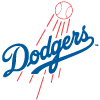 Walker Buehler, SP, Dodgers (was 14, now 21) and
Walker Buehler, SP, Dodgers (was 14, now 21) and Jack Flaherty, SP, Cardinals (was 16, now 30): This pair of excellent young pitchers dropped from the one-two turn to the mid-to-late second round. I had the smallest drops for each player, but all four of us are lower on both than we were in March. The introduction of the designated hitter in the National League (which, thankfully, is for the moment merely a one-year change) is the primary reason for the drop on my part, causing a small drop for NL pitchers across the board. As a group, we were seemingly low on top pitching as a whole, however, with each of the top five starters in our March rankings dropping in our latest edition. At the moment, it's difficult to say how built up a given pitcher will be for his first turn or two in the rotation, due to the short amount of time they'll have back in camp. If most pitchers are on pitch counts for even their first two starts of the year, that would likely represent a full sixth of their outings over the course of the season.
Jack Flaherty, SP, Cardinals (was 16, now 30): This pair of excellent young pitchers dropped from the one-two turn to the mid-to-late second round. I had the smallest drops for each player, but all four of us are lower on both than we were in March. The introduction of the designated hitter in the National League (which, thankfully, is for the moment merely a one-year change) is the primary reason for the drop on my part, causing a small drop for NL pitchers across the board. As a group, we were seemingly low on top pitching as a whole, however, with each of the top five starters in our March rankings dropping in our latest edition. At the moment, it's difficult to say how built up a given pitcher will be for his first turn or two in the rotation, due to the short amount of time they'll have back in camp. If most pitchers are on pitch counts for even their first two starts of the year, that would likely represent a full sixth of their outings over the course of the season.
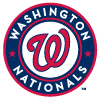 Stephen Strasburg, SP, Nationals (was 25, now 38): As with Buehler and Flaherty, we dropped Strasburg across the board, though seeing my fellow rankers' drop him by at least nine and as many as 18 spots has me thinking I should have been harsher than my three-spot change. The same factors (the universal designated hitter and the uncertainty regarding pitcher workloads) which dropped Buehler and Flaherty's stock dropped Strasburg as well, as he falls from the mid-second round to the mid-third. He's hurt still further by the expected changes to the schedule, as he'll play two thirds of his games against the NL East, the only division with four teams who finished .500 or better last season, and one third against the AL East, the only American League division with at least three teams with winning records.
Stephen Strasburg, SP, Nationals (was 25, now 38): As with Buehler and Flaherty, we dropped Strasburg across the board, though seeing my fellow rankers' drop him by at least nine and as many as 18 spots has me thinking I should have been harsher than my three-spot change. The same factors (the universal designated hitter and the uncertainty regarding pitcher workloads) which dropped Buehler and Flaherty's stock dropped Strasburg as well, as he falls from the mid-second round to the mid-third. He's hurt still further by the expected changes to the schedule, as he'll play two thirds of his games against the NL East, the only division with four teams who finished .500 or better last season, and one third against the AL East, the only American League division with at least three teams with winning records.
 Aaron Nola, SP, Phillies (was 47, now 61): You might be sensing a pattern by now. All the factors that affected Buehler, Flaherty and Strasburg affect Nola as well. He'll be hurt by the universal designated hitter, hurt by any potential early season workload concerns and hurt by playing the NL East for the majority of his games and the AL East for the rest. This piece from FanGraphs' Dan Szymborski contains an estimate of each team's strength of schedule (based on Szymborski's ZiPS projection system) and gives the Phillies the sixth-toughest schedule. It's worth remembering when it comes to strength of schedule that teams don't play themselves, so the Phillies project to have an even more difficult path than the Nationals. The two toughest schedules in the league will be the worst teams in each East division, the Orioles and Marlins.
Aaron Nola, SP, Phillies (was 47, now 61): You might be sensing a pattern by now. All the factors that affected Buehler, Flaherty and Strasburg affect Nola as well. He'll be hurt by the universal designated hitter, hurt by any potential early season workload concerns and hurt by playing the NL East for the majority of his games and the AL East for the rest. This piece from FanGraphs' Dan Szymborski contains an estimate of each team's strength of schedule (based on Szymborski's ZiPS projection system) and gives the Phillies the sixth-toughest schedule. It's worth remembering when it comes to strength of schedule that teams don't play themselves, so the Phillies project to have an even more difficult path than the Nationals. The two toughest schedules in the league will be the worst teams in each East division, the Orioles and Marlins.
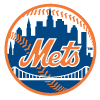 Noah Syndergaard, SP, Mets (was 78, now unranked): Not much to analyze here, but Syndergaard is listed in this space as a reminder to those who missed (or forgot) that he underwent Tommy John surgery in March. You can therefore obviously take him off your draft board completely in redraft leagues. Chris Sale's prognosis was comparably optimistic at the time of our previous rankings, as he'd recently been throwing to test whether he needed surgery. Plenty of skepticism about his health meant we'd ranked him 173rd at the time, but he was announced as needing surgery just a few days later and underwent the procedure in late March, so he can be taken off the board as well.
Noah Syndergaard, SP, Mets (was 78, now unranked): Not much to analyze here, but Syndergaard is listed in this space as a reminder to those who missed (or forgot) that he underwent Tommy John surgery in March. You can therefore obviously take him off your draft board completely in redraft leagues. Chris Sale's prognosis was comparably optimistic at the time of our previous rankings, as he'd recently been throwing to test whether he needed surgery. Plenty of skepticism about his health meant we'd ranked him 173rd at the time, but he was announced as needing surgery just a few days later and underwent the procedure in late March, so he can be taken off the board as well.


